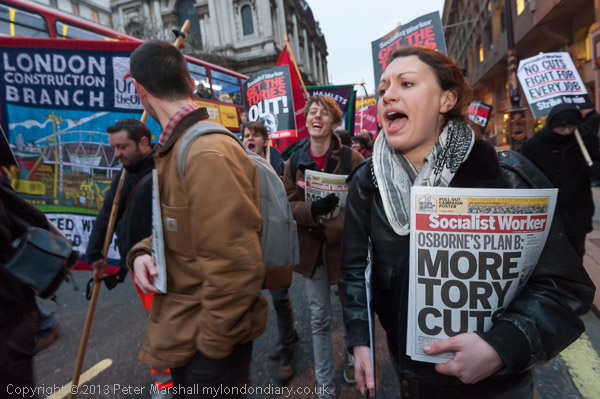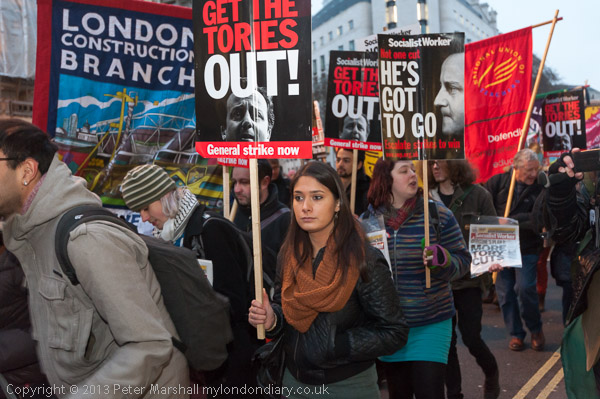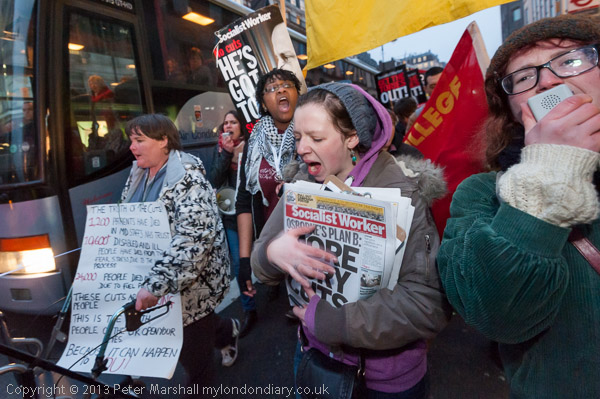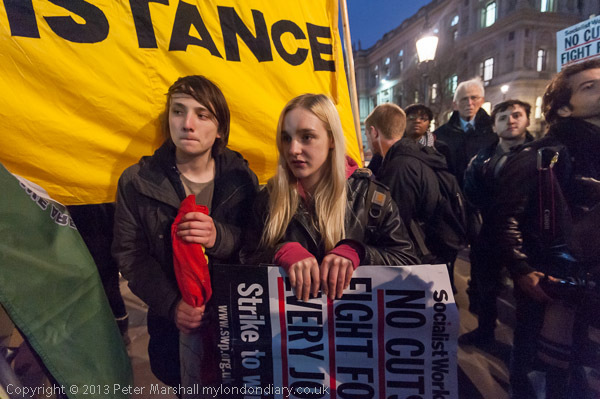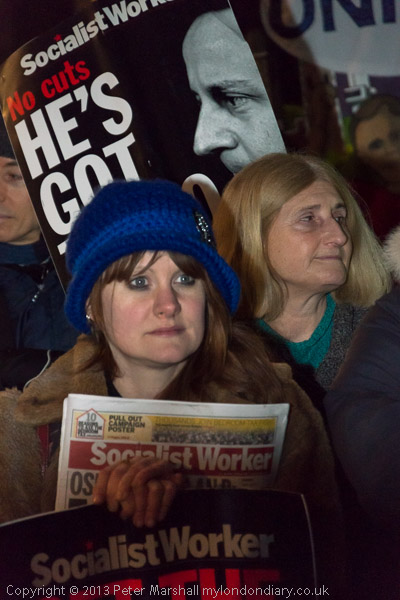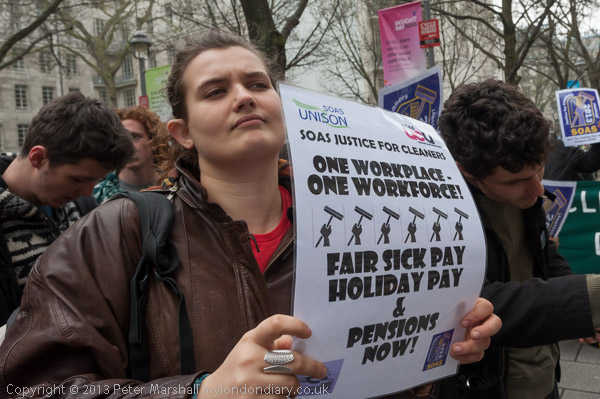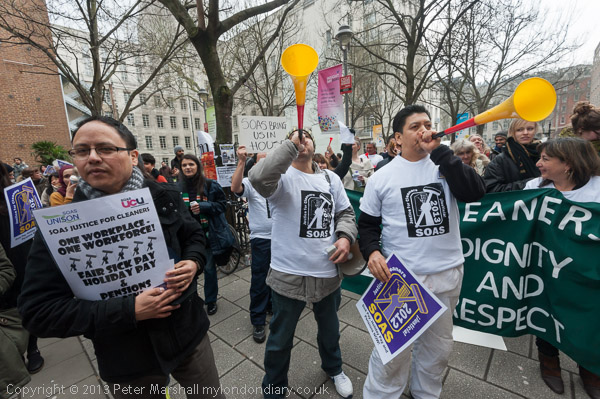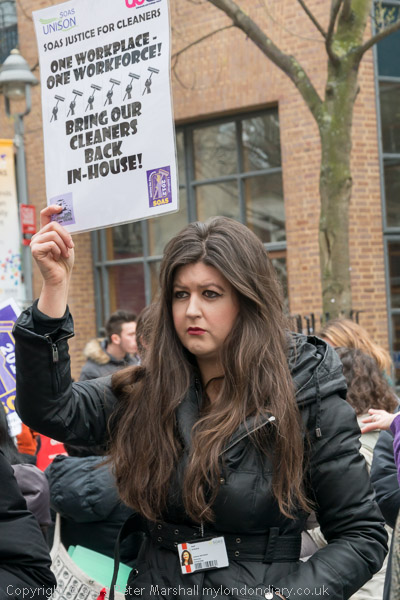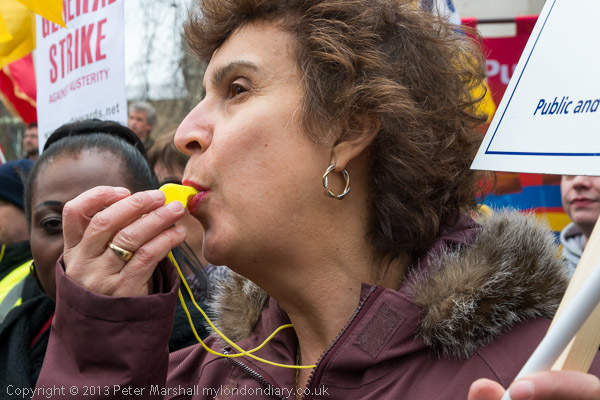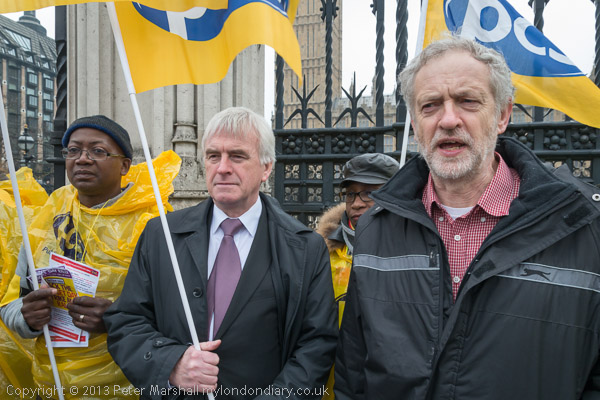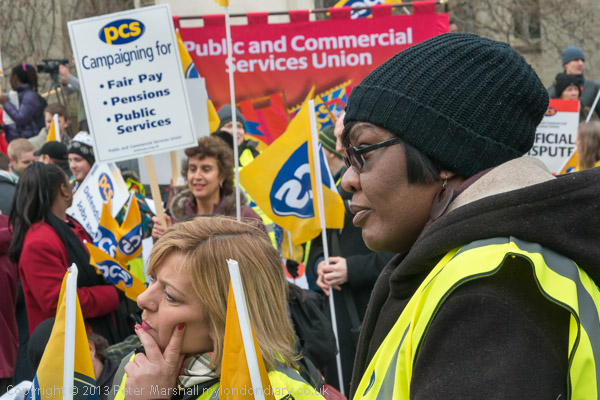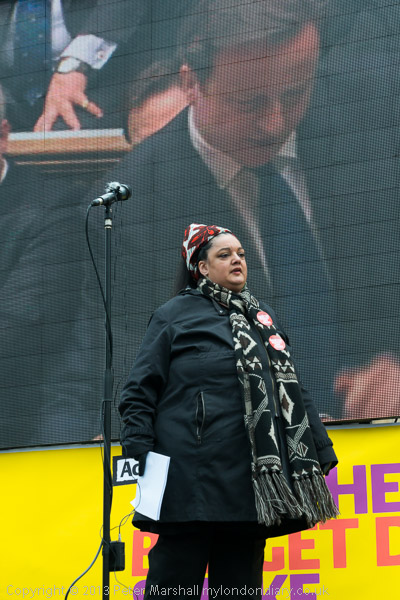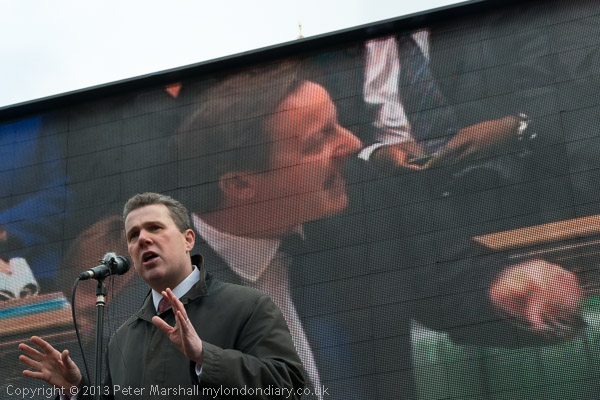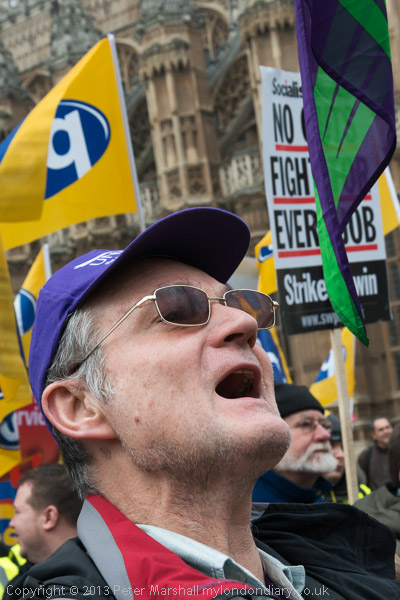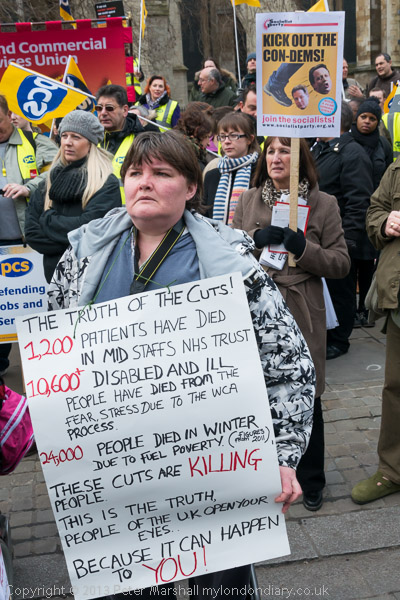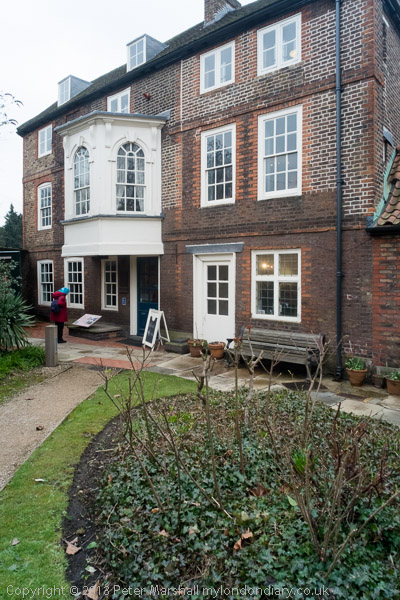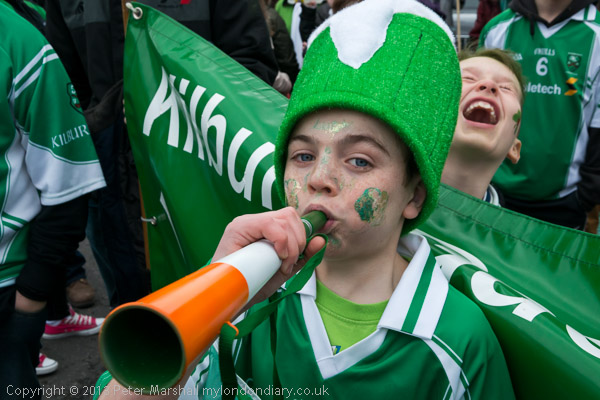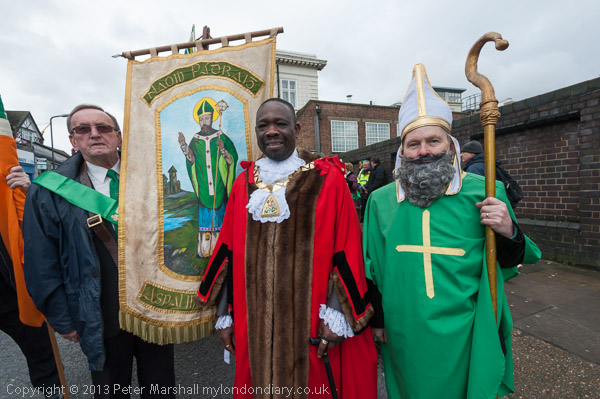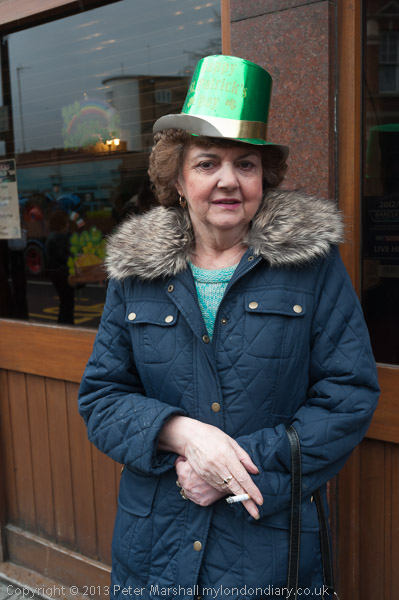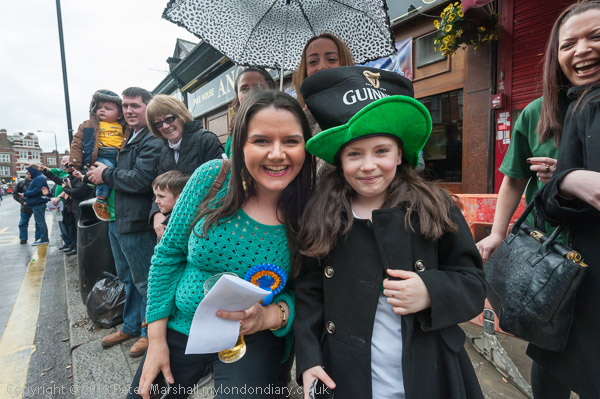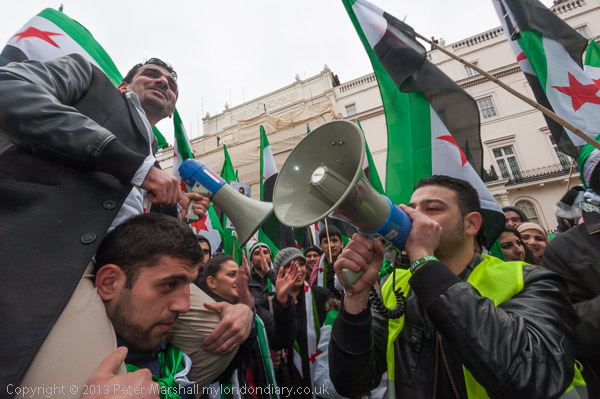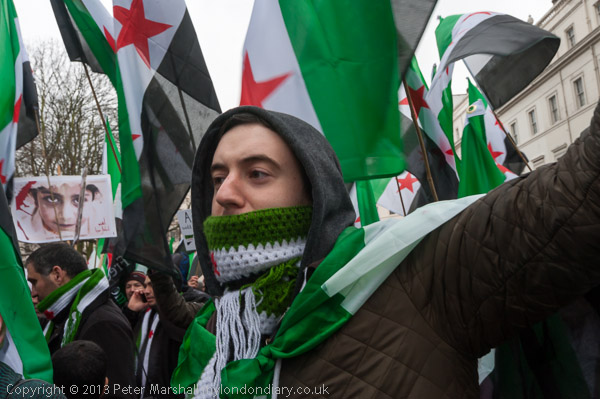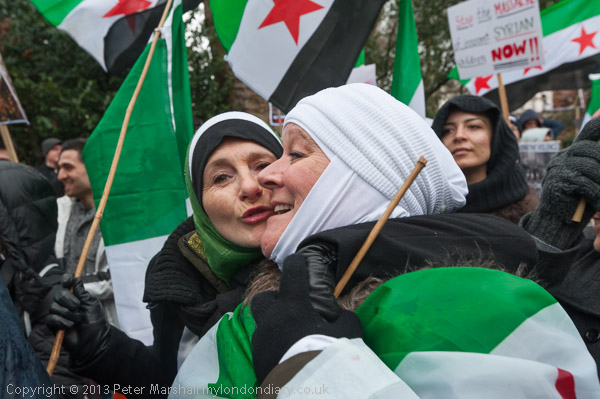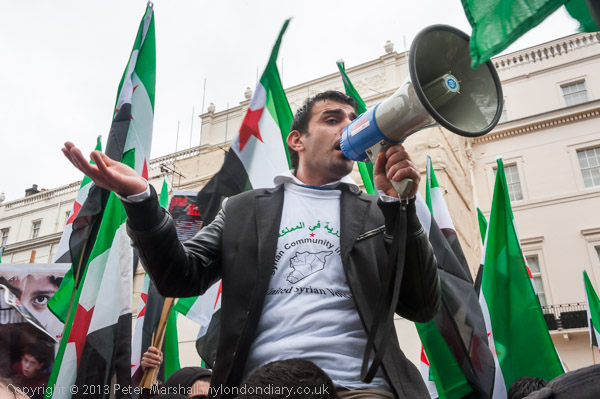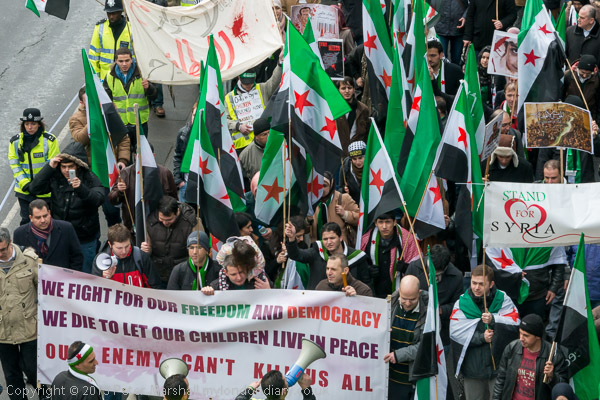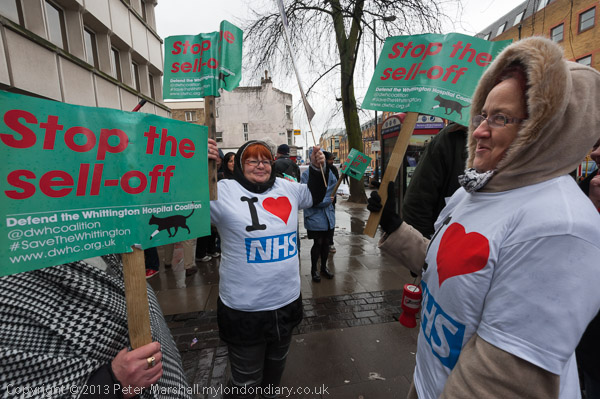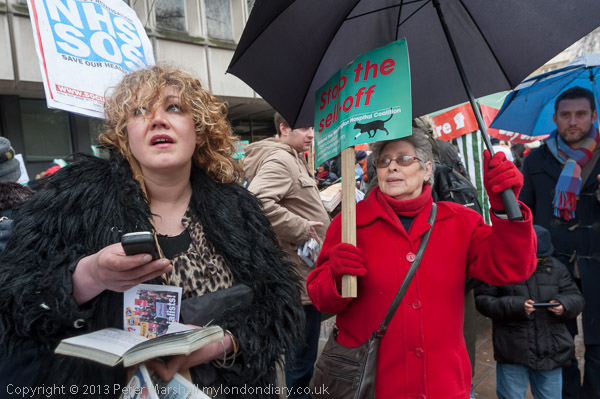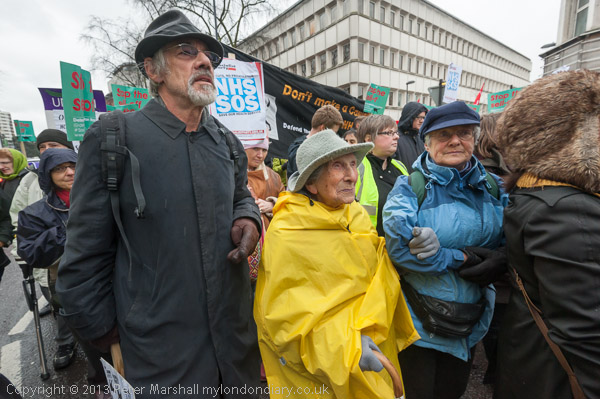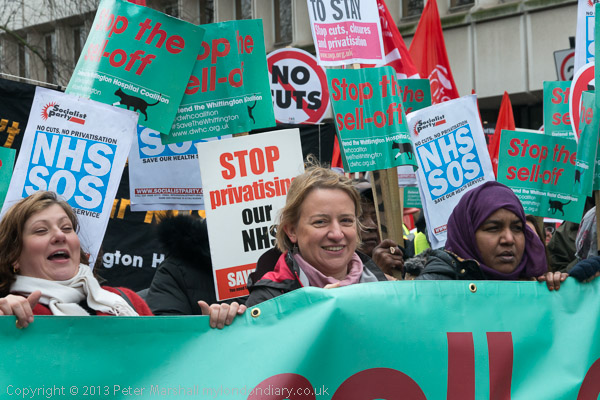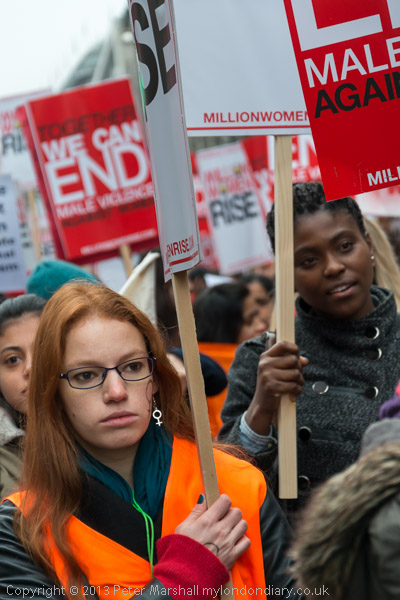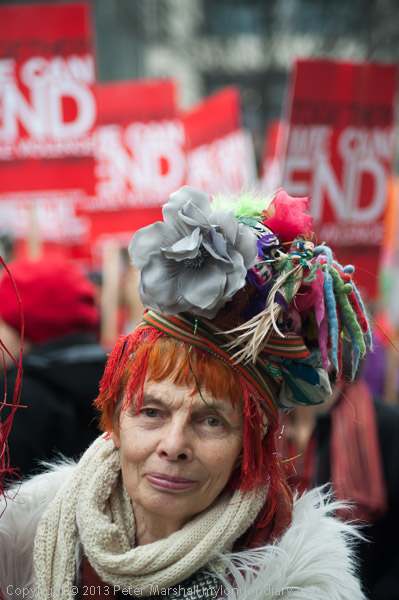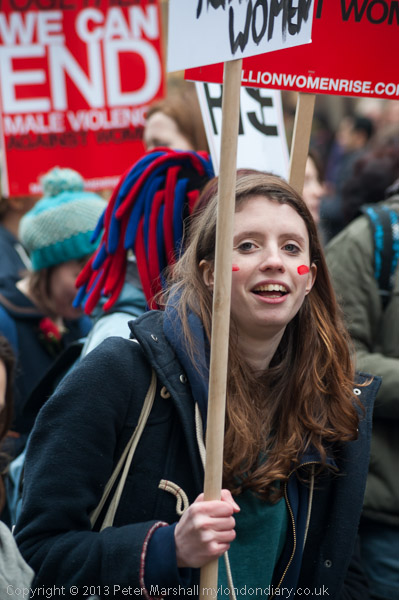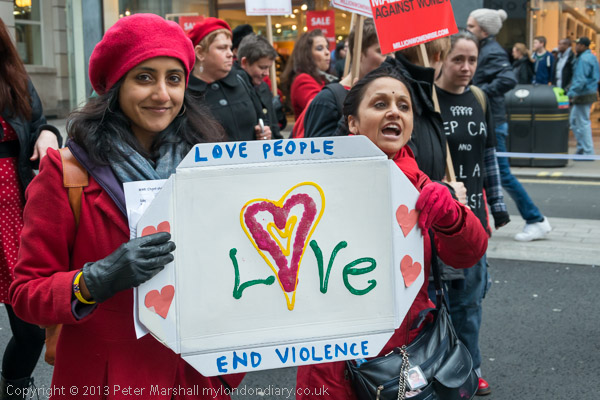A few years ago, the Leica M8 came out to generally very enthusiastic reviews, including some great write-ups from photographers who had been given the camera to use. Not long after, I had a sudden fit of seeming affluence, and made my way on a sunny afternoon to Wey Cameras and spent the small fortune involved – and another £50 on a spare battery. The camera felt almost like a Leica, though lacking the silky-smooth engineering of my old M2 (arguably the pinnacle of the marque) the prospect of a digital version was exciting, and the test shots I made only increased my excitement, though I could see it had some limitations compared to the Nikon I was then using, particularly as I was unable to afford new coded Leica lenses.
My exhilaration lasted up to the first time I took it out to use it in anger. I enjoyed using it with the 21mm Voigtlander (28mm equivalent) in a small animal rights event, dancing through the protesters sitting on the steps of the Royal Exchange almost like in the days of film, though it seemed considerably noisier and perhaps its automatic exposure wasn’t as accurate as some. But then I went on to another protest – and one I had actually been commissioned to cover – where there was a picket line of women in black burkhas – and found in the Leica images they came out in various shades of brown and purple.
It wasn’t a good time. Wey Cameras went out of business a bout a week after I’d bought the camera from them, and a few days later I got the push from the job which had been making me feel reasonably off, providing well over half my income. To find I’d bought a camera that was hopeless with colour wasn’t good news.
Of course I wasn’t the only photographer who was having problems, and eventually even Leica admitted they’d got things wrong and supplied those who had bought the camera with a couple of IR cut filters free of charge, which went some way to solve the problem. But at the same time it introduced other issues, and while the camera became usable for 35mm and longer lenses (the 35mm became a standard lens, around 45mm equiv), colour remained a real pain with the wide angles I prefer. Again there was a solution from Leica, but only for their own coded lenses, and the free Cornerfix software did a good job, but added complication to the workflow.
Some people loved the camera despite this, and its poor showing by modern standards at high ISO, and it isn’t a bad camera for black and white (and a good choice for IR photography), but most of its life was spent sitting on my desk doing nothing. The resale price for the original M8 slumped to under half what I paid for it. I couldn’t afford new Leica lenses (which allow firmware correction of some of the problems) nor to get the M9 with which it might make some sense as a second body. It’s gone to a friend with an M9, for whom it makes much more sense as a second body, while I’ve got in exchange an almost new condition Fuji X P.ro1, back from a full overhaul.
I’d been wondering for some time whether to buy a lighter smaller camera system, but couldn’t decide whether to try the Olympus OMD or Fuji. I’d more or less decided that the Fuji XE1 looked right, though only when the wide-angle zoom became available – which looks like being next year. So the X-Pro1 looked a good alternative, with perhaps the XE1 as a second body.
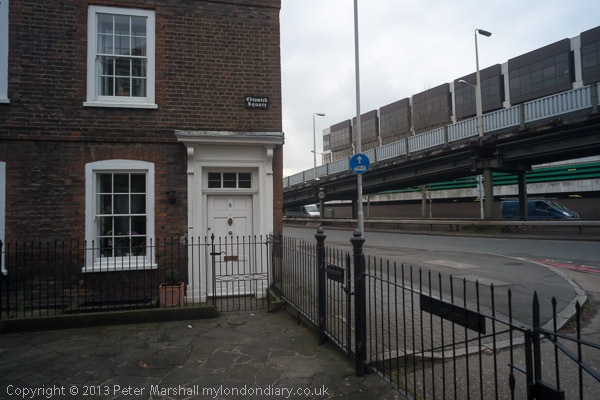
Chiswick Square – probably Hogarth’s nearest neighbours – and the Hogarth flyover – 15mm Voigtlander
In Chiswick I had the X-Pro1 but no Fuji lenses, so I was working with Leica M adapters with Leica and Voigtlander lenses. My old Voigtlanders are screw fitting, so there is also a screw to M adapter. Despite this, the first joy was to find the ease of changing lenses – more or less like going back to Leica or Olympus OM days – I’ve never found it quite so quick and simple with Nikon. I’d got two adapters with the camera, one an expensive Fuji version and the other a cheap Kiron – about one eigth of the price of the Fuji. I’d been warned that I might have problems with the cheap one, but I’d done a few brick wall pictures and could see no difference.
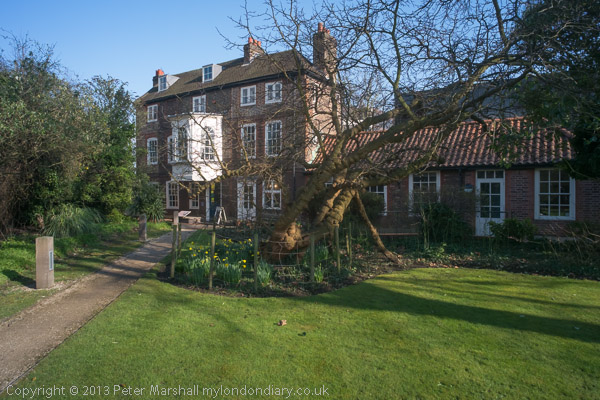
Hogarth’s House and garden – the mulberry tree was here when he moved in
Mostly I was using wide angles, so focus was seldom a problem, but where it is, the ability to zoom in digitally to focus was a great help, though it seemed going back to the dark ages to have to manually open the lens for precise focus, then stop down manually to take the picture. I think I’ll mainly work with Fuji lenses if I decide to work serious with the camera.
Automatic exposure still works fine – and it works just like it does on my other Fuji. The exposure compensation dial has a firmer detent, but it’s still possible for the heavy handed to shift in by accident (as I found) though fortunately the underexposure I set by accident on some frames made little difference to the results.
As might be expecting, working with these lenses is rather slower than using an all-automatic system, unless you make settings in advance – and with the wide angles you usually can except at short distances. Since there is no focussing, there is no noticeable shutter lag, but as with the Fuji X100, I sometime found the camera sulking after it had not been used for a while, taking a short time and some button pressing to bring it back to life.
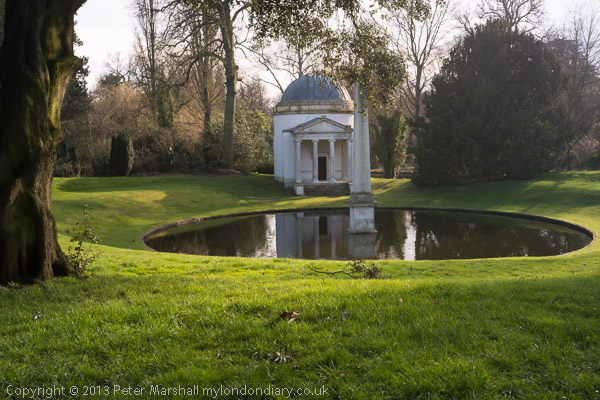
Chiswick House gardens, close to Hogarth’s house.
Framing in the optical viewfinder is close – as good or better than with the Leica, and it can be set for any focal length, though for very wide lenses the viewfinder frame obviously can’t expand enough – and for these and lenses such as the 90mm it’s usually better to use the electronic viewfinder. This is just a little slow to react to movement and exposure changes to be a good choice all of the time, and noticeably poorer than on the newer XE1. The X100 digital viewfinder also seems better.
My old Voigtlander 15mm, which has been dropped a few times is still a decent performer, virtually distortion free and a good 23mm equiv wide-angle, but rather susceptible to flare, and it will not take a filter for protection. Unfortunately both my 21mm Voigtlander and 28mm Minolta lenses both have some fungus that gives rise to flare, but all my other M lenses fit and work well. At first I thought I would not be able to use my old 35mm f1.4 Summilux, but although it won’t focus to infinity with the genuine Fuji adapter, there are no problems with the cheaper version. But if I find the system fits my needs then it will make sense to buy Fuji lenses, starting with the 18-55mm. The 18mm pancake would be a nice choice when I want a more or less pocketable camera, but really it is the wide zoom that will be my most useful lens once that comes out. There is a 14mm already, and an independent manual semi-fisheye, but my Nikon 10mm f2.8 will also fit with an adaptor. Fuji also promise a longer zoom, but until then the Leitz 90mm f2.8 will serve, and the electronic viewfinder makes that rather easier to use than peering at the tiny rectangle in the Leica viewfinder. Or for something seriously long I could always use the Nikon 70-300mm, though probably only should I become a bird watcher.
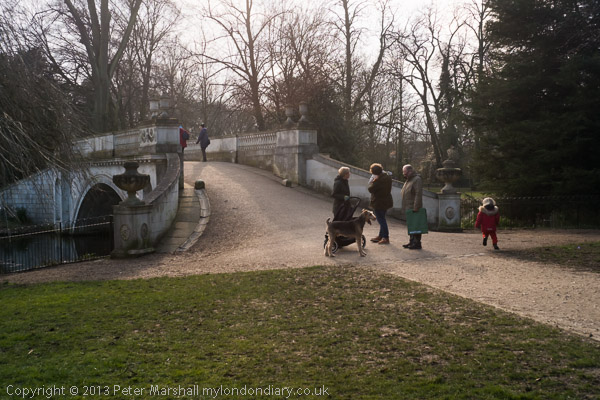
Chiswick House grounds – a public park.
The images were a pleasure to work with in Lightroom. A little vignetting on the wide angles, and no EXIF lens data so no automatic corrections. Lightroom 4.3 – the current version – doesn’t include any profiles for Fuji lenses on the X Pro1 or XE1, though perhaps they will come, along with the improved de-mosaicing of the Fuji raw files which is in the current release candidate. I’ve not noticed any real problems with this so far, and I love the way the Fuji colour captures the winter afternoon sunlight.
Continue reading Hogarth & Fuji
